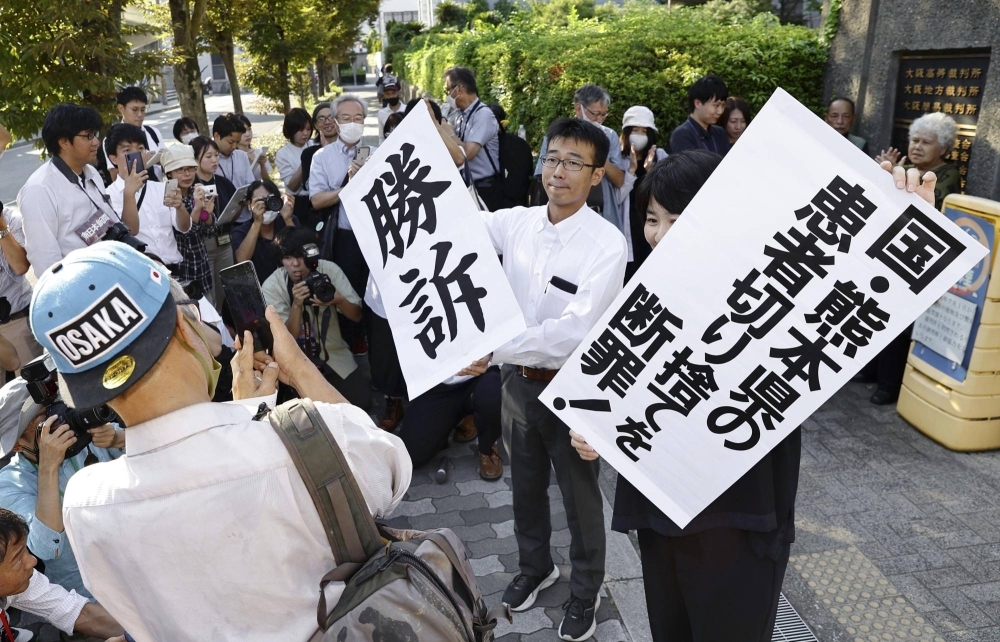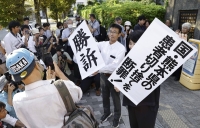Osaka District Court on Wednesday recognized 128 plaintiffs rejected from a special Minamata disease relief program as sufferers of the disease, or mercury poisoning caused by polluted industrial wastewater.
Presiding Judge Yuki Tatsuno ordered that ¥2.75 million in damages be paid to each of the 128 people who sued the central government, the prefectural government of Kumamoto and chemical maker Chisso, which caused the pollution.
The plaintiffs had demanded ¥4.5 million per person, claiming that they were unfairly excluded from the special program.
The ruling is the first for a series of similar lawsuits filed with the Tokyo, Niigata and Kumamoto district courts, as well as the Osaka court, and is likely to influence the rulings to be issued later. A total of about 1,800 plaintiffs are involved in the lawsuits.
The 128 plaintiffs are from the neighboring prefectures of Kumamoto and Kagoshima and live in 13 prefectures mainly in the Kinki region.
They are said to have noticed that they had symptoms of the disease after moving away from Kumamoto and Kagoshima prefectures.
The plaintiffs have claimed that they are obviously sufferers of Minamata disease because they had been eating seafood from Minamata Bay in the city of Minamata in Kumamoto Prefecture, where fish were contaminated with methyl mercury, on a daily basis and have symptoms such as numbness in their hands or feet.
The central government had insisted that there was no evidence to determine for certain that they are suffering from Minamata disease.
The special law for the relief program was put into effect in 2009. About 48,000 people applied for the program by the deadline in 2012. Of them, about 38,000 became eligible for lump-sum payments or medical benefits, but about 9,700 people were rejected for reasons such as place of residence and age.




